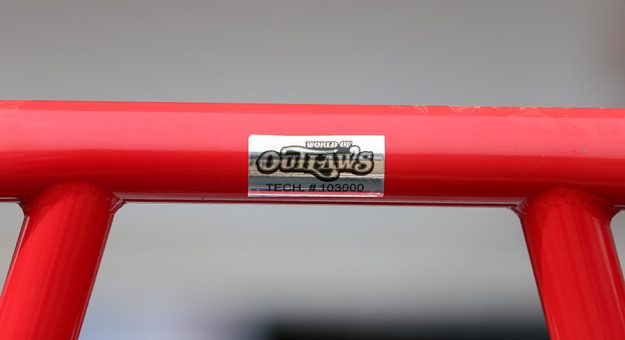There isn’t much Tom Devitt, technical director of the World of Outlaws NOS Energy Sprint Car Series, hasn’t seen in the broad world of motorsports.
Devitt grew up in Southern California where in the 1960s he helped maintain his father’s dirt midget team, a time before roll cages were implemented. When he was old enough, Devitt tried pavement stock car racing, which eventually brought him into a long career as an engine builder.
Devitt moved to North Carolina to be an instructor at NASCAR Technical Institute for a short period, leading to his vital position with the world’s leading winged sprint car sanctioning body beginning in 2012.
On July 31 during a pre-race inspection at Weedsport (N.Y.) Speedway, a new scenario caught Devitt by surprise.
Peculiarities with Aaron Reutzel’s Roth Motorsports’ No. 83 sprint car signaled a red flag in Devitt’s usual tech routine.
Devitt’s findings soon escalated into one of the more jarring penalties in sprint car racing history.
On Aug. 4, Reutzel received a $10,000 fine and a 30-day suspension for attempting to circumvent the World of Outlaws Sprint Car Series inspection process prior to the race at Weedsport.
Devitt caught Reutzel employing a chassis that was previously disallowed because of undersized tubing.
Reutzel repainted the white chassis, already deemed unfit for competition in June at Knoxville (Iowa) Raceway and tried legitimizing it with an inspection sticker taken from another car.
“The biggest issue from that whole situation was taking an inspection sticker from one car and putting it on another car,” Devitt said. “That was the reasoning behind the penalty. The chassis itself, usually when we come across a chassis like that, we just say, ‘You can’t race that car. Get another car out.’ We leave it at that, there’s no penalty.”
Thanks to Devitt, the sprint car chassis inspection process is more efficient and precise than ever. Most technological procedures are evidently advanced, but Devitt’s efforts are important to note.
It ultimately revolves around safety.
Since joining the World of Outlaws, Devitt has spurred the addition of axle tethers, full containment seats and safety bars that decrease the span between the front and rear uprights. The latter is geared to help prevent collapsing of the chassis during a crash.
Reutzel’s chassis, a 2011 model from Triple X Race Components, was flagged because the upright around the driver’s compartment had become too thin.
The chassis had passed WoO tech five times over the past 10 years, according to Triple X owner Mark Badock.
But over that span, the chassis was sandblasted and powder-coated multiple times. Said treatments gradually diminish tubing size.
“Ninety percent of the time, the car owner, crew chief or driver don’t know what those thicknesses are,” Devitt said. “Usually, when I come across a car that doesn’t meet those specifications, it’s usually been a mistake to no fault of the car owner or driver, like if the chassis has been sandblasted several times.
“We have come across some issues where we followed through the process and went all the way back to the mill, that they made a mistake on the tubing,” Devitt added.
When Devitt assumed his role with the World of Outlaws in 2012, he incorporated an extensive but straightforward testing method.
Devitt created an outline of roughly 30 areas on a sprint car that need to be tested. Eighteen of those areas of emphasis are on the chassis, and they are tested with an Ultrasonic Thickness Gauge Tester.
Before Devitt arrived, the World of Outlaws didn’t use any devices to determine chassis tubing thickness.
Now, Devitt is uber analytical. The series technical director has generated a database that records each testing point on every chassis he inspects. Serial numbers differentiate chassis tested, which are broken down by manufacturer, series and team.
“The need for data comes from my engine-building background,” Devitt said. “The tech was OK (before 2012), but nothing like what we’re doing now. I’ve really evolved the tech to where it is now.”
The All Star Circuit of Champions adopted Devitt’s World of Outlaws testing procedure when Tony Stewart bought the series in 2015. Devitt was actually the one who trained Eric Walls, who served as the All Star Circuit of Champions technical director from 2015 to ’19. Now Walls acts as the series director.
“Everybody thinks it’s the Outlaws versus the All Stars and we don’t look at it that way,” Walls said. “It’s two sanctioning bodies with the same type of cars. Our rulebooks are very, very similar, if not the same. That’s very important to grow the sport of 410 racing.”
“Eric and I talk a lot, about anything moving forward,” Devitt said.
Click below to continue reading.
